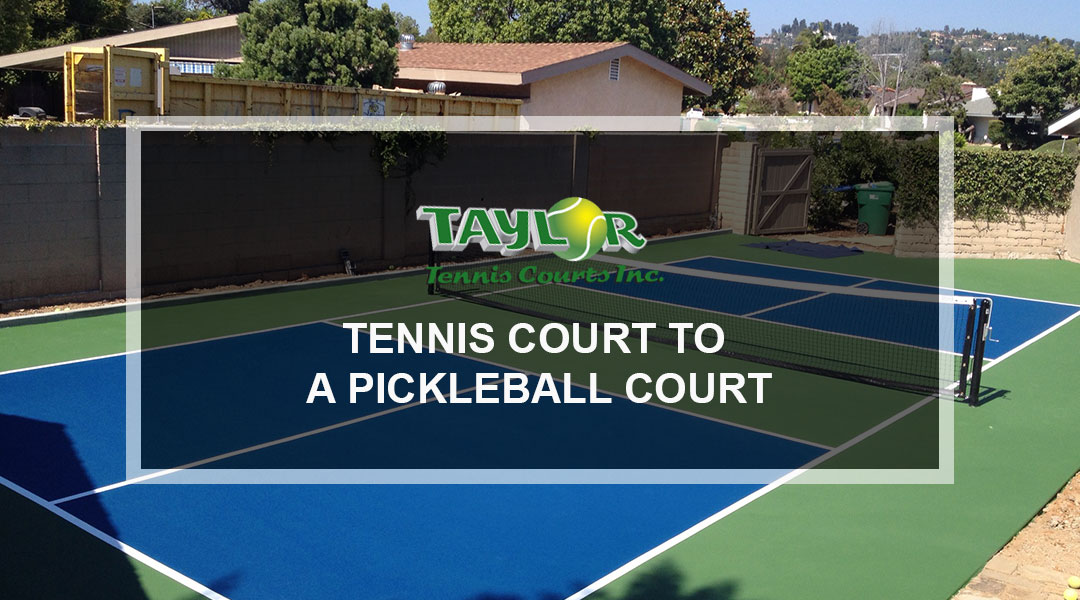Sustainable Practices in Pickleball Court Construction You Ought To Know
As the popularity of pickleball remains to climb, so also does the requirement for sustainable techniques in court building and construction. This strategy not just addresses ecological worries however also boosts the longevity and functionality of the courts. From choosing environmentally friendly materials to executing efficient drainage and energy-saving lights remedies, there are various methods to think about. The effect of these techniques expands far beyond the court itself. Understanding how each aspect adds to a more lasting future welcomes even more exploration into the intricate equilibrium in between entertainment development and ecological stewardship.
Picking Eco-Friendly Materials
Picking green products is an important action in the construction of lasting pickleball courts. The selection of sustainable products not just minimizes environmental effect but likewise enhances the long life and performance of the court. Secret products consist of recycled rubber for the surface, which offers outstanding toughness and shock absorption while diverting waste from landfills.
Furthermore, utilizing in your area sourced materials minimizes transport emissions and supports local economies. Pickleball court construction. As an example, utilizing native woods for fence and seating can supply a lasting visual while ensuring durability versus the components.
Integrating absorptive products for court structures can even more add to sustainability by allowing for all-natural water drain and reducing overflow. These options not just secure local ecological communities however likewise advertise healthier play atmospheres.
Efficient Water Drainage Solutions
While the selection of eco-friendly materials is essential, applying efficient water drainage remedies is just as essential for keeping sustainable pickleball courts. Appropriate water drainage not just safeguards the court surface area from water damage but additionally decreases disintegration and overflow, promoting ecological stability.
Efficient drain systems can consist of absorptive paving, which permits water to infiltrate the ground instead of pooling externally. This reduces the probability of standing water, which can cause mold and mildew and other upkeep problems. Additionally, integrating strategically put drainage channels and swales can direct excess water away from the court area, ensuring a dry having fun surface area and stopping soil erosion.
Making use of indigenous vegetation in the landscape design around the courts can further improve water drainage by absorbing excess water and decreasing overflow. These plants require less watering and advertise biodiversity, lining up with lasting methods.
Furthermore, it is crucial to consistently preserve the drain system to guarantee its long-lasting efficiency. This consists of cleaning debris and surveillance for blockages. By prioritizing reliable water drainage services, pickleball court contractors can dramatically add to the sustainability and durability of the center, inevitably profiting both players and the atmosphere.
Energy-Efficient Illumination Options
As the need for pickleball remains to expand, incorporating energy-efficient lights options into court design has actually come to be significantly important for sustainability. Conventional illumination systems usually eat excessive energy, adding to higher functional costs and ecological impact. Consequently, embracing modern-day, energy-efficient technologies is essential for both brand-new building and constructions and improvements.
LED (Light Emitting Diode) illumination sticks out as a top option because of its long life and power financial savings (Pickleball court construction). Compared to standard illumination, LEDs use about 75% much less energy and can last as much as 25 times much longer, substantially reducing maintenance costs. In addition, the directional nature of LED illumination reduces Website light air pollution, ensuring that lighting is focused on the court as opposed to bordering look at this web-site areas.
Lasting Surface Area Alternatives
Discovering lasting surface area alternatives for pickleball courts has acquired traction among players and builders alike. The focus on environment-friendly materials not only aligns with the expanding ecological recognition yet additionally boosts the efficiency and resilience of the courts.
This material provides exceptional shock absorption, minimizing the risk of injuries for gamers while promoting sustainability. These tiles are very easy to change and set up, and their flexibility permits for different court setups.
Natural grass courts are likewise arising as a sustainable choice, promoting biodiversity and lowering the warmth island effect. Nevertheless, they call for routine maintenance and water, which may not align with all sustainability goals.

Water Conservation Strategies

Another efficient strategy includes the installment of rainwater harvesting systems. These systems save and collect rainwater for usage in maintaining court surfaces and landscape design. This method not just preserves potable water yet likewise lowers reliance on metropolitan sources.
In addition, using drought-resistant landscaping around the courts is necessary. Indigenous plants require less water and are better adapted to regional climate conditions, therefore decreasing general water consumption. In addition, making use of efficient irrigation systems, such as drip watering, guarantees that water is provided directly to plant origins, decreasing dissipation and waste.
Verdict
Integrating lasting techniques in pickleball court construction substantially contributes to environmental conservation and resource effectiveness. By focusing on these practices, the building of pickleball courts can line up with more comprehensive ecological objectives while advertising durability and capability within communities.
As the popularity of pickleball continues to rise, so as well does the need for sustainable practices in court construction.Choosing environment-friendly products is an essential step in the building of sustainable pickleball courts. By focusing on energy-efficient lights alternatives, pickleball court builders can add to an extra lasting future while satisfying the needs of players and stakeholders alike.Integrating sustainable surface choices not only boosts the efficiency of pickleball courts but additionally leads the way for implementing reliable water conservation strategies.Integrating sustainable practices in pickleball court building and construction dramatically contributes to ecological preservation and source effectiveness.